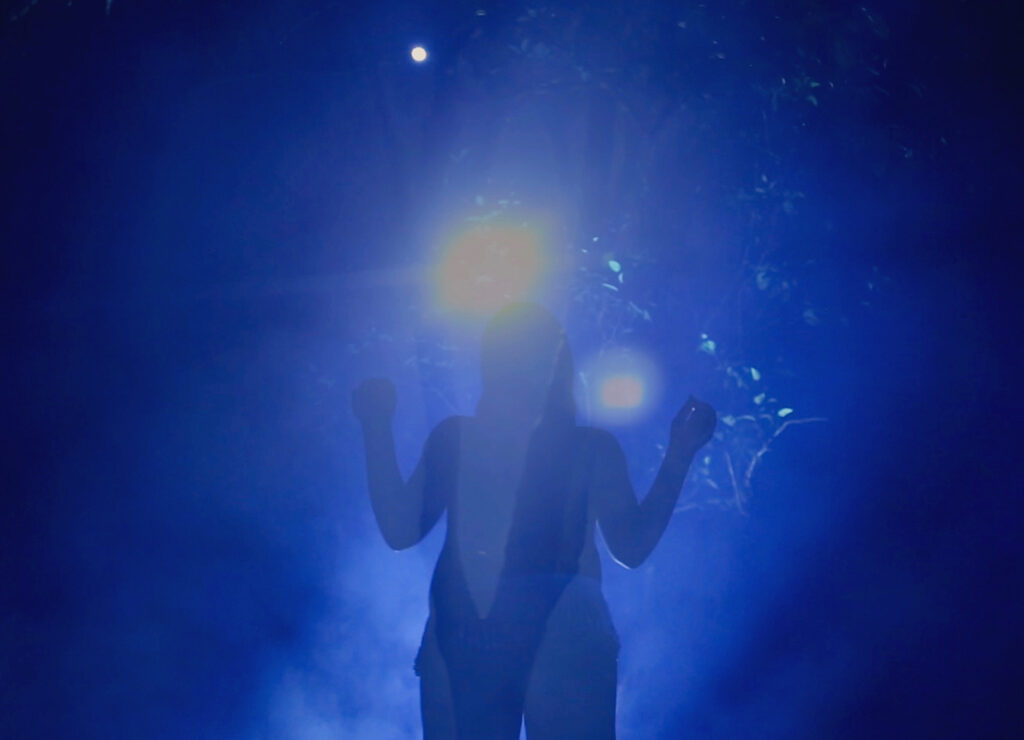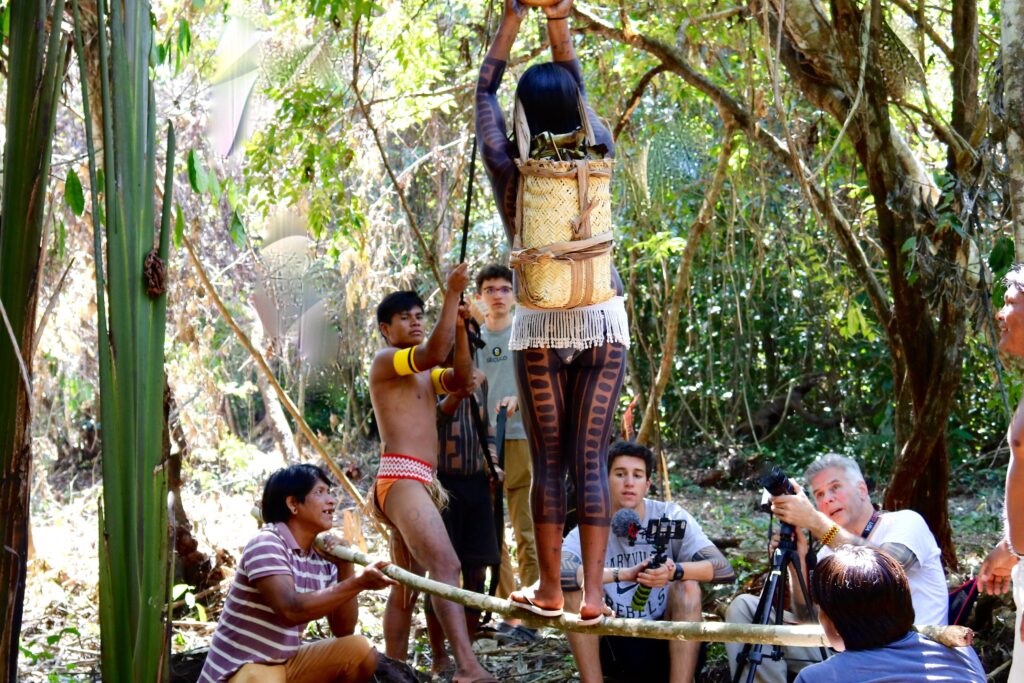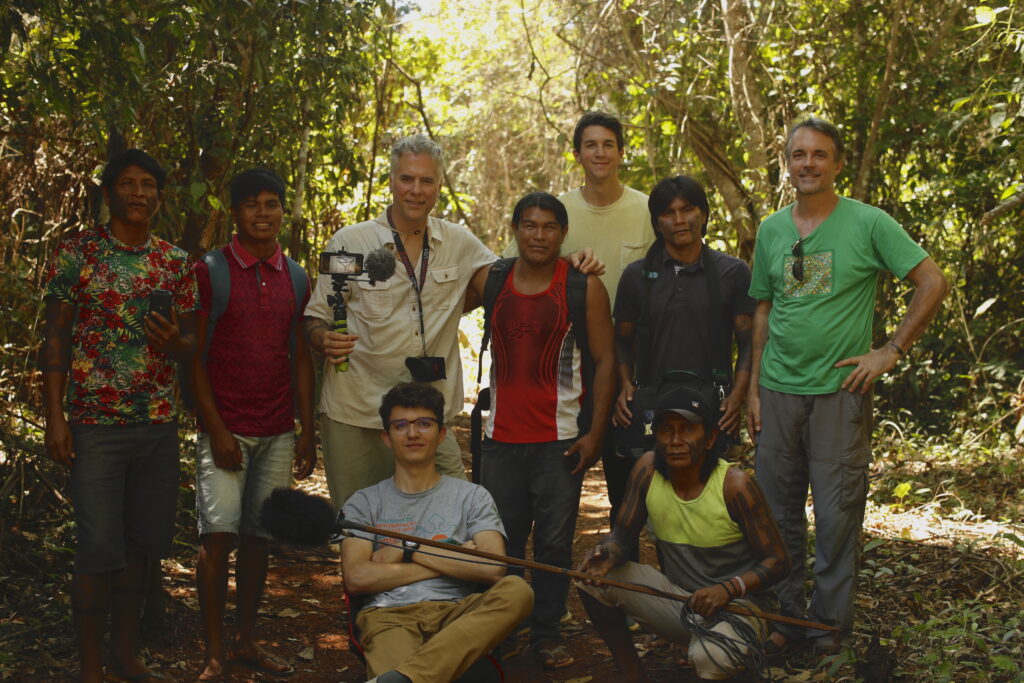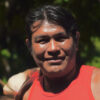Bringing Nhakpoti, the Kayapó Story of Star Girl, to the Screen

Just ahead, a Kayapó warrior in flip-flops slashes through forest undergrowth with his machete. Behind him, filmmaker Pat-i navigates the narrow path with a boom microphone. The rest of us on the filmmaking crew follow close behind. Suddenly, Pat-i stops. He points the boom mic into the forest and says, “I remember seeing a wang-ynh this way.”
It was late June 2019. We were searching the forest near the village of A’Ukre in the Brazilian Amazon for a particular species of flexible tree. The wang-ynh tree figures prominently in the Kayapó story of “Star Girl,” or “Nhakpoti.” The story recounts how a Kayapó boy declared his love to a beautiful star, who then came down from the heavens to marry him. Not satisfied with the meager mushroom diet of her primordial Kayapó in-laws, Star Girl flies back into the sky, propelled by a wang-ynh catapult, and brings down agricultural crops for the village.
For the film adaptation of the story, our production team envisioned a scene catapulting a novice Kayapó actress into the heavens—using nothing more than a sapling, some vines and climbing rope for guy wires, and a little fancy camera work.
The Kayapó (who call themselves Mêbêngôkre) have been pioneers in the growing global Indigenous media movement. In the early 1990s, anthropologist Terence Turner described one community’s innovative use of video to document and defend their culture. Inspired by Turner’s work, co-author Glenn Shepard Jr. began collaborating with anthropologist Richard Pace in 2010 to train more Kayapó filmmakers and better understand their perspectives. In 2017, co-author and filmmaker Paul Chilsen joined forces with anthropologists Shepard, Pace, and Laura Zanotti (who had been working independently on Indigenous media in A’Ukre since 2012). The team started providing additional equipment and training for a growing cadre of Kayapó filmmakers in several villages.
Up until recently, Kayapó-made films have mainly focused on recording traditional ceremonies and political rallies in real time. However, as a result of training workshops and contact with other Indigenous media-makers, Kayapó filmmakers have started to explore other film storytelling genres beyond documentaries. Co-author Pat-i expressed an interest in experimenting with the fictionalized narrative genre—the first of its kind in his community. And so, we began adapting the tale of Nhakpoti into a short film.
Growing up, “Nhakpoti is one of many stories I heard from our elders,” explained Pat-i. “We chose this story to be our first narrative film because it’s short. We thought it would be easy to make as our first film. In our minds, it would take just a few days.”
However, the process turned out to be more complicated and time-consuming than the Kayapó team anticipated.
The entire filmmaking process—storyboarding, casting, writing dialogue, shooting, and, finally, editing—was carried out in collaboration with elders and the filmmaking collective from Pat-i’s home village of A’Ukre in the Brazilian Amazon. As part of a two-week training course in A’Ukre in 2019, a multicultural crew, including Indigenous filmmakers and actors, U.S. college students, and U.S. and Brazilian researchers, worked together to produce the film. With COVID-19 delays, travel restrictions, multilingual translations, and working across the miles, the film was finally completed in early 2023.
The film alternates between a scene of a current village elder, Krwyt, telling the story to his grandson in the present day, and a reenactment of the legendary story of Nhakpoti by Kayapó actors. By blending the mythical past with the present, the film is faithful to deeply rooted Kayapó notions of time and history. Kayapó rituals and aesthetics emphasize how ancient forms and values are always reproduced in the present. Indeed, during Nhakpoti’s wedding feast at the end of the film, mythical events become virtually indistinguishable from a current-day Kayapó ceremony. [1] [1] This scene reflects what Shepard and Pace have described as a distinctive “Kayapó film aesthetic.”
The production revealed the complexities of transcultural filmmaking. For example, the initial male lead was shy in front of the camera, so a collective decision was made to replace him with a more assertive actor. However, the female lead suddenly refused to speak her lines to the new actor, bringing production to a halt. We learned that kinship taboos prohibited her from addressing this particular relative directly. To respect Kayapó customs, we had to find a new female lead.
In another learning experience, Kayapó filmmakers who had previously worked mostly in documentaries realized they needed to shift their audio recording techniques for this film. They suddenly had to worry about roosters and gasoline generators interrupting the harmonious mythical soundscape the film was attempting to create.
To facilitate the creation of more narrative films in the future, the village filmmaking collective is now considering building a remote shooting location far from anachronistic sights and sounds. Such a site could help the Indigenous filmmaking collective in A’Ukre achieve even more independence within the global media industry.
For Chilsen, Shepard, and the other collaborators from outside of A’Ukre, the goal has always been to affirm and prioritize Indigenous voices and to understand the unique Kayapó cultural perspective on filmmaking. Rather than transposing a Hollywood studio model on A’Ukre, the making of Nhakpoti shows how Kayapó filmmakers are creating their own filmmaking tradition: a sort of “A’Ukrewood in the making,” as Shepard and Pace put it.
“It was a learning process,” Pat-i reflected on the collaboration. “We understood that this is how ‘White people’ make films. Now, hopefully, we can make our own narrative films without their help.”
Back in the forest that day, we were nearing the end of our shoot, and we all could feel how this intense, critical scene embodied the depth and significance of this cultural, creative exchange.
After locating the wang-ynh tree in the forest, we set about working out the complexities of “catapulting” Nhakpoti into the heavens.
The non-Indigenous members of the film crew relied on the ingenuity of Kayapó woodsmen-grips as they lashed together saplings and vines, using a tree fork to create an improvised jib for the Star Girl’s heavenly flight. Likewise, Kayapó filmmakers were fully engrossed in seeing how strategic camera angles could produce the magic of special effects. Working together, we all helped Star Girl soar.
Nhakpoti debuted at the Montreal First Peoples Festival in August, taking home a prize for Best International Short Film.





























